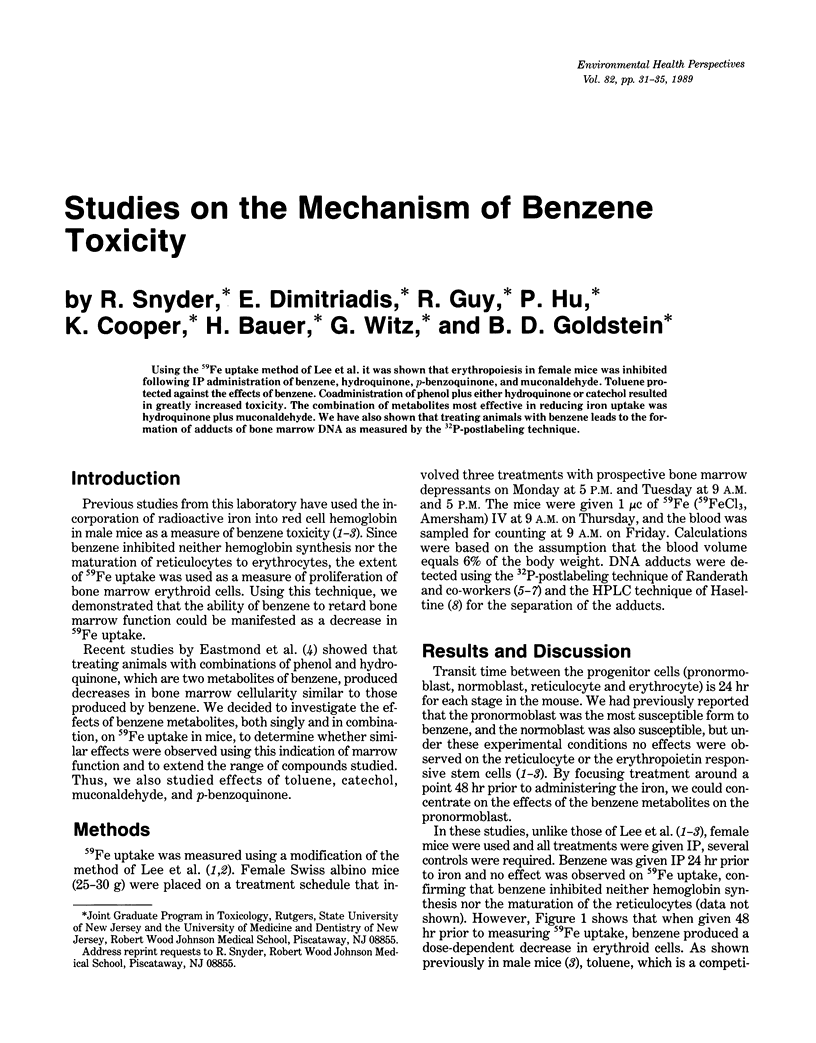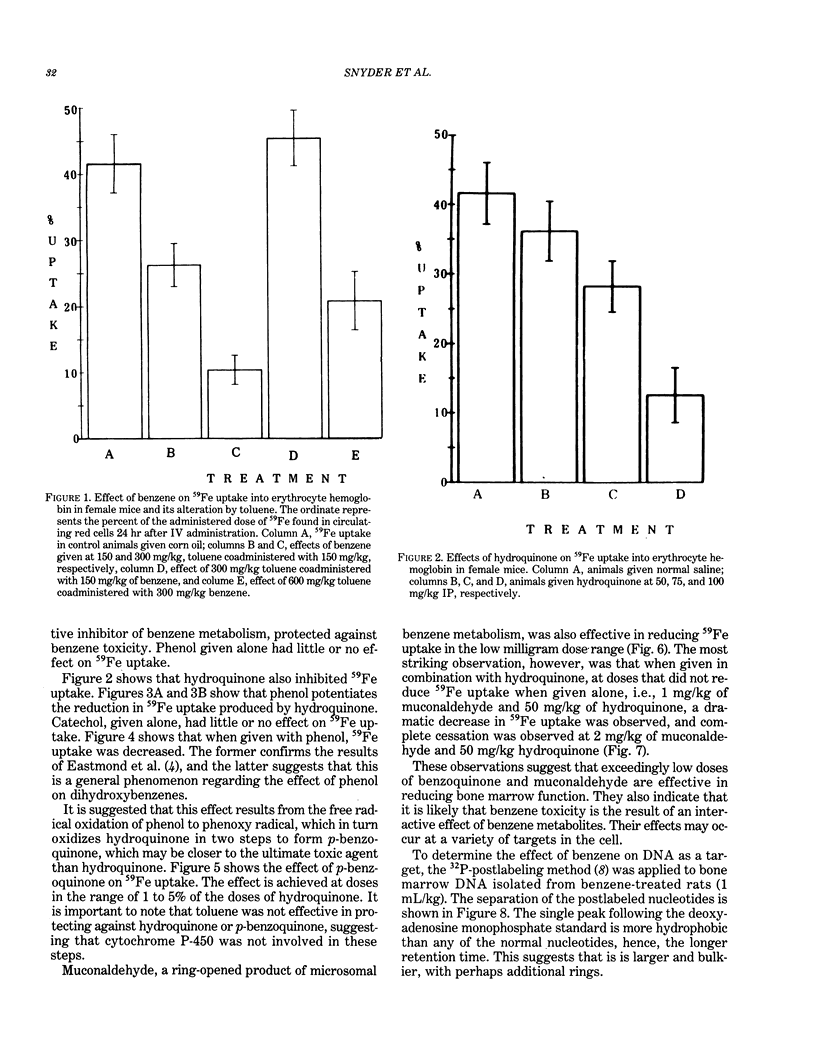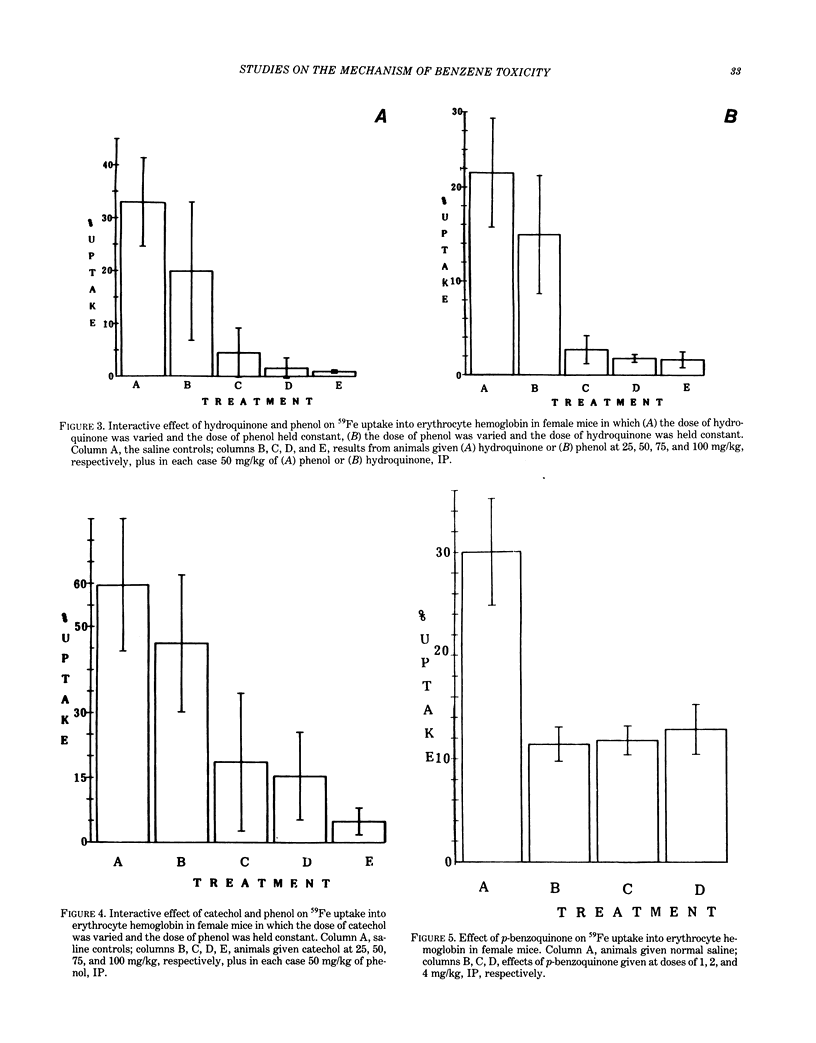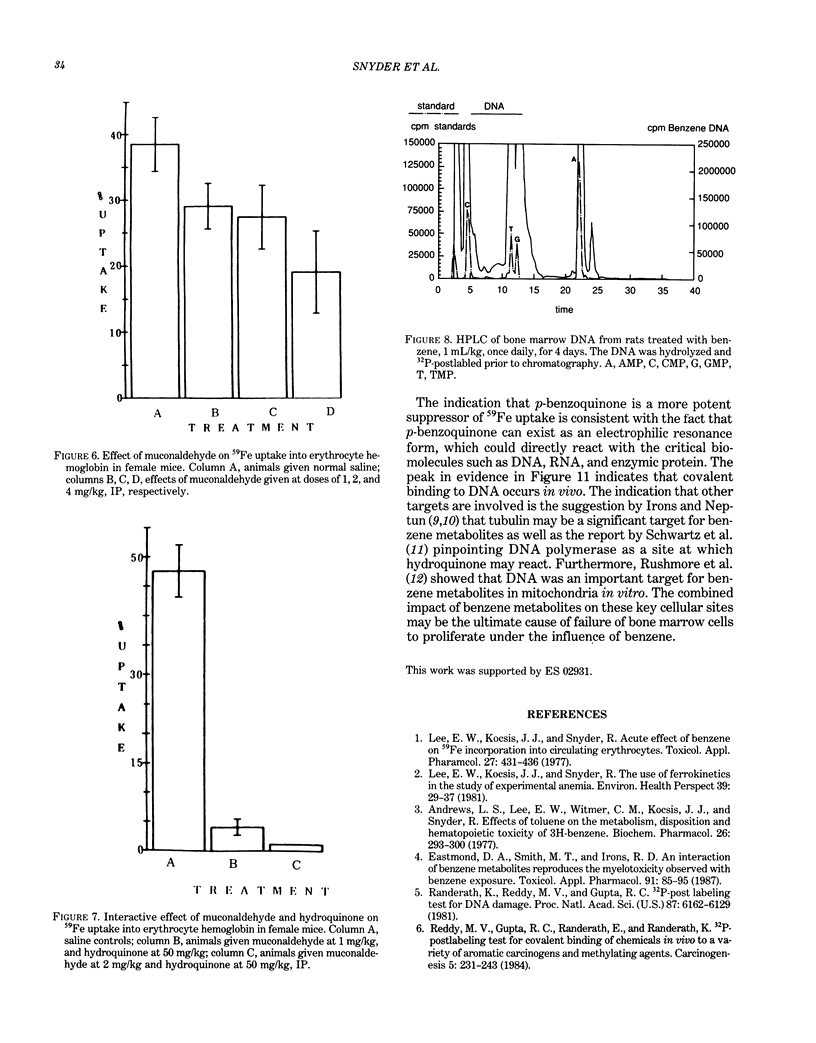Abstract
Using the 59Fe uptake method of Lee et al. it was shown that erythropoiesis in female mice was inhibited following IP administration of benzene, hydroquinone, p-benzoquinone, and muconaldehyde. Toluene protected against the effects of benzene. Coadministration of phenol plus either hydroquinone or catechol resulted in greatly increased toxicity. The combination of metabolites most effective in reducing iron uptake was hydroquinone plus muconaldehyde. We have also shown that treating animals with benzene leads to the formation of adducts of bone marrow DNA as measured by the 32P-postlabeling technique.
Full text
PDF




Selected References
These references are in PubMed. This may not be the complete list of references from this article.
- Andrews L. S., Lee E. W., Witmer C. M., Kocsis J. J., Snyder R. Effects of toluene on the metabolism, disposition and hemopoietic toxicity of [3H]benzene. Biochem Pharmacol. 1977 Feb 15;26(4):293–300. doi: 10.1016/0006-2952(77)90180-0. [DOI] [PubMed] [Google Scholar]
- Eastmond D. A., Smith M. T., Irons R. D. An interaction of benzene metabolites reproduces the myelotoxicity observed with benzene exposure. Toxicol Appl Pharmacol. 1987 Oct;91(1):85–95. doi: 10.1016/0041-008x(87)90196-7. [DOI] [PubMed] [Google Scholar]
- Haseltine W. A., Franklin W., Lippke J. A. New methods for detection of low levels of DNA damage in human populations. Environ Health Perspect. 1983 Feb;48:29–41. doi: 10.1289/ehp.834829. [DOI] [PMC free article] [PubMed] [Google Scholar]
- Irons R. D., Neptun D. A. Effects of the principal hydroxy-metabolites of benzene on microtubule polymerization. Arch Toxicol. 1980 Oct;45(4):297–305. doi: 10.1007/BF00293810. [DOI] [PubMed] [Google Scholar]
- Irons R. D., Neptun D. A., Pfeifer R. W. Inhibition of lymphocyte transformation and microtubule assembly by quinone metabolites of benzene: evidence for a common mechanism. J Reticuloendothel Soc. 1981 Nov;30(5):359–372. [PubMed] [Google Scholar]
- Lee E. W., Kocsis J. J., Snyder R. The use of ferrokinetics in the study of experimental anemia. Environ Health Perspect. 1981 Jun;39:29–37. doi: 10.1289/ehp.813929. [DOI] [PMC free article] [PubMed] [Google Scholar]
- Reddy M. V., Gupta R. C., Randerath E., Randerath K. 32P-postlabeling test for covalent DNA binding of chemicals in vivo: application to a variety of aromatic carcinogens and methylating agents. Carcinogenesis. 1984 Feb;5(2):231–243. doi: 10.1093/carcin/5.2.231. [DOI] [PubMed] [Google Scholar]
- Reddy M. V., Randerath K. Nuclease P1-mediated enhancement of sensitivity of 32P-postlabeling test for structurally diverse DNA adducts. Carcinogenesis. 1986 Sep;7(9):1543–1551. doi: 10.1093/carcin/7.9.1543. [DOI] [PubMed] [Google Scholar]
- Rushmore T., Snyder R., Kalf G. Covalent binding of benzene and its metabolites to DNA in rabbit bone marrow mitochondria in vitro. Chem Biol Interact. 1984 Apr;49(1-2):133–154. doi: 10.1016/0009-2797(84)90057-7. [DOI] [PubMed] [Google Scholar]
- Schwartz C. S., Snyder R., Kalf G. F. The inhibition of mitochondrial DNA replication in vitro by the metabolites of benzene, hydroquinone and p-benzoquinone. Chem Biol Interact. 1985 May;53(3):327–350. doi: 10.1016/s0009-2797(85)80108-3. [DOI] [PubMed] [Google Scholar]


